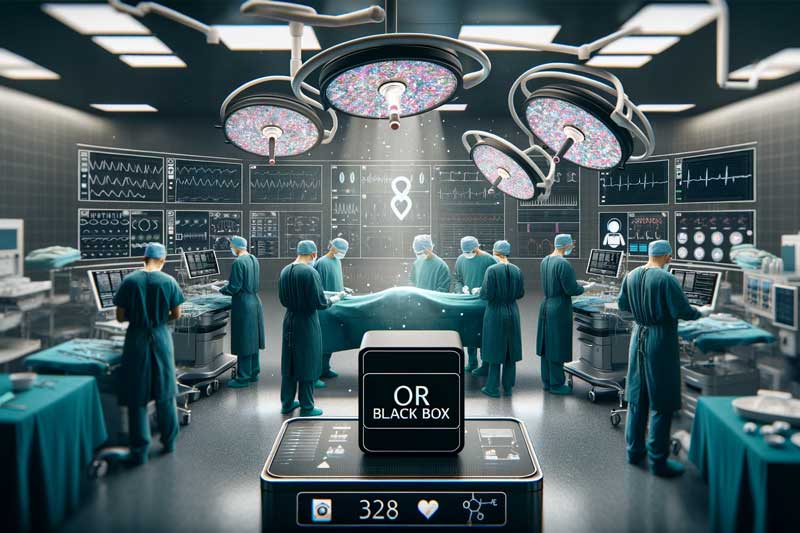Artificial intelligence is a term that is as vague as it is powerful. The decision-making processes of today’s business leaders have moved heavily towards information technology and away from intuition, but the word that is driving this change sounds like it was ripped from a science fiction story.
Tweet: The evolution of artificial intelligence in analytics
Over the course of its history, AI has evolved from descriptive, to predictive, and finally to prescriptive analytics and each of these steps represents a different way that the computer is able to recreate human thought. Let’s take a look at how AI has evolved over the years.
The essence of AI
At its core, artificial intelligence is the act of programming machines to carry out objectives that are either too challenging or too labor-intensive for humans to do. As authors Ian Heller, Michael Wu, and Austin Garrison write in their article, “The Future of AI in Distribution,” the end goal for developers is to create something that is, “aware of (its) real or virtual environments, so that (it) reacts to circumstances and stimuli the way a human would.” The human element is where intelligence comes in. The goal of artificial intelligence is to recreate how a human would react to the information presented but on a scale that is out of our computational powers.
Big data
Before jumping into the different iterations of AI, a quick digression to explain what analytics are built upon, because without it, this topic would not exist. The rise of big data and computational power have given companies the ability to harness large quantities of information for their own benefit. Big data is simply large quantities of data that cannot be analyzed without the help of powerful computers. This can come in the form of inventory records or trades happening on a stock exchange. “The Future of AI in Distribution” article says that big data is now possible because of, “interconnected computers that allow aggregation of real-time information for everything from transactions to traffic flows.”
To apply AI to big data, the computing power of businesses had to match the size of the problem. This was possible through the introduction of graphics processing units (GPUs) to improve computer performance. The combination of large data sets that can be manipulated and broken down by stronger computers paved the way for the artificial intelligence that is changing the face of business decision-making.
Descriptive analytics
Descriptive analytics uses data aggregation and mining to create summary statistics on a certain product or a business as a whole. En route to mimicking human reactions, descriptive analytics is like the computer gaining its five senses. It can tell you the basics of what is going on but nothing beyond that. This level makes up 80% of analytics and aims at acquiring small nuggets of information. These small bits of information could be the impressions and click-through-rate of an advertisement, which could be used by a marketing executive to determine reach and engagement of the ad. These conclusions are shallow and do not tell the marketer everything they want to know but they are a start. The predictive and prescriptive analytics use these small bits of descriptive analytics to create even stronger insights.
Predictive analytics
The forward-thinking step of data analysis is predictive analytics. At this point, the robot “human”, complete with its newly acquired five senses, would now be able to perceive time and connect the dots between past and future events. If descriptive analytics is a child’s ability to detect that fresh smell of rain, predictive analytics would allow it to know that rain is soon coming when the smell arrives.
For information analysis, programmers apply mathematical models to data sets to find patterns. So when a certain input is proposed by an organization, let’s say an inventory change that favors one item during a certain period of time, the program will compare sales of the proposed item in the past to predict what the outcome of this change will be and whether it will be cost effective.
This technology has great potential for connecting sales data with customer data to provide insight into who is buying what products. This would allow distributors to target advertising, adjust inventory, and optimize shelf locations for their goods ahead of time to capture the highest possible sales. The upside is clearly there for predictive data but there needs to be a bedrock of strong computing power, which is not ubiquitous with distributors in the marketplace.
Prescriptive analytics
Here we get the most “human” version of artificial intelligence. Using the same example from before, A.I. that is capable of prescriptive analysis would smell the rain, know that the smell means rain is coming, and then, most importantly, tell everyone that they should go inside so as to not get wet.
The informational process of prescriptive analytics analyzes the success of outcomes arrived at through predictive analytics and creates models to optimize the outcomes themselves. Each step builds upon the other. This evolution is so helpful because as author David Judge says in the article, “The Path from Predictive to Prescriptive Analytics,” it “removes the human element from the decision-making process and instead allows software to identify and suggest the next course of action.”
Computers are not groggy because their baby woke up at 3 am or depressed because they are going through a breakup. Human decision-making on a large scale makes up a large number of the mistakes in distribution choices. Combine this with the fact that a majority of distribution funnels are so complex that it would be impossible for even the sharpest, most experienced salesperson to make completely informed decisions and one can see the necessity of AI in the decision-making process of a business.
Looking ahead
At the moment, the benefits of prescriptive analytics, and the whole interconnected chain of descriptive and predictive solutions, is unable to be accessed because of a lack of human resources. With all this talk of AI and smart computers, there still needs to be some human input at the enterprise level.
In the case of prescriptive analytics, as author David Judge says, organizational data is often, “locked away in databases and only those database administrators who could code structured query language were able to access it.” This takes labor-intensive hours and high technical skill to accomplish so the process has been slow moving.
Beyond the technical issues, companies need to change the tasks they are asking of their analytics to move from predictive to prescriptive. The evolution of artificial intelligence has massive potential to aid in the decision-making processes of businesses and optimize profits in the short and long term.
Related articles
- 3 Advantages to Using Simulation in Predictive Analytics
- AI and Human Instincts: Better Together
- Simulation: Modeling Cause and Effect for Powerful Predictive Analytics
- Data Analytics and Artificial Intelligence in the Race for a Coronavirus Vaccine - September 14, 2020
- The Balance Between Data Insights and Governance on the Path to Returning to Work - August 26, 2020
- Data Analytics and the Fight Against COVID-19 - August 10, 2020



